Planetary Nebula
Advertisements:
This photograph of the coil-shaped Helix Nebula is one of the largest and most detailed celestial images ever made. The composite picture is a seamless blend of ultra-sharp images from NASA's Hubble Space Telescope combined with the wide view of the Mosaic Camera on the National Science Foundation's 0.9-meter telescope at Kitt Peak National Observatory near Tucson, Ariz. (Photo by NASA/WireImage)
This image is NGC 6543 known as the Cat's Eye Nebula as it appears to the Chandra X-Ray Observatory and Hubble Telescope. A planetary nebula is a phase of stellar evolution that the sun should experience several billion years from now, when it expands to become a red giant and then sheds most of its outer layers, leaving behind a hot core that contracts to form a dense white dwarf star. This image was released October 10, 2012. (Photo by J. Kastner/NASA/CXC/RIT)
Planetary nebula IC 418, known as the Spirograph Nebula, located 2,000 light years from Earth, is seen in this photo from the Wide Field Planetary Camera 2 aboard NASA's Hubble Space Telescope. (Photo by Dr. Raghvendra Sahai and Dr. Arsen R. Hajian/AP Photo/NASA/The Hubble Heritage Team)
This image, taken by the NASA/ESA Hubble Space Telescope February 6, 2007, shows the planetary nebula NGC 2440 – the chaotic structure of the demise of a star, a colorful [last Hurray] of a star like our Sun. (Photo by AP Photo/Hubble)
In this image taken July 2, 2011 provided by NASA Thursday August 11, 2011 a giant cosmic necklace glows brightly in this Hubble Space Telescope image. The object, aptly named the Necklace Nebula, is a recently discovered planetary nebula, the glowing remains of an ordinary, Sun-like star. The Necklace Nebula is located 15,000 light-years away in the constellation Sagitta. (Photo by AP Photo/NASA)
This image provided by the Hubble Space Telescope shows the striking details of the famed planetary nebula designated NGC 2818, which lies in the southern constellation of Pyxis (the Compass). (Photo by AP Photo/NASA)
The interior of a planetary nebula glows in radient colors January 9, 2001 in an image taken by NASA's Chandra X-ray Observatory. Astronomers unexpectedly found a central star in the late stages of life emitting powerful X-ray energy. The X-ray observations of the Cat's Eye Nebula reveal a hot gas cloud around a bright star, which is shedding its material and is expected to collapse into a white dwarf in several million years. (Photo by NASA/Newsmakers)
This infrared image from NASA's Spitzer Space Telescope shows the Helix nebula, a cosmic starlet often photographed by amateur astronomers for its vivid colors and eerie resemblance to a giant eye. (Photo by AP Photo/HO/NASA)
This intriguing picture from ESO’s Very Large Telescope shows the glowing green planetary nebula IC 1295 surrounding a dim and dying star. It is located about 3,300 light-years away in the constellation of Scutum (The Shield). The new image, released on April 10, 2013 by the European Southern Observatory, shows the planetary nebula IC 1295 like it has never been seen before. This picture, which ESO scientists dubbed [ghostly], marks the first time the nebula has been imaged such unprecedented detail. (Photo by ESO)
The 30 Doradus Nebula, a fertile star-forming region is seen in this panoramic mosaic portrait released by NASA July 26, 2001 of a vast, sculpted landscape of gas and dust where thousands of stars are being born. (Photo by NASA)
This NASA handout shows an optical image of NGC 6543 from the first systematic survey of such objects in the solar neighborhood made with NASA's Chandra X-ray Observatory. A planetary nebula is a phase of stellar evolution that the sun should experience several billion years from now, when it expands to become a red giant and then sheds most of its outer layers, leaving behind a hot core that contracts to form a dense white dwarf star. (Photo by Reuters/NASA/STScI)
A planetary nebula named NGC 6302, also known as, Butterfly Nebula and Bug Nebula, in the Scorpius constellation is pictured July 27, 2009. (Photo by NASA/ESA/The Hubble SM4 ERO Team)
This image is of planetary nebula NGC 7662 as seen with the Chandra X-Ray Observatory. A planetary nebula is a phase of stellar evolution that the sun should experience several billion years from now, when it expands to become a red giant and then sheds most of its outer layers, leaving behind a hot core that contracts to form a dense white dwarf star. This image was released October 10, 2012. (Photo by J. Kastner/NASA/CXC/RIT)
A watery-looking nebula in deep space is being renamed after the sea creature it strongly resembles: a manatee. Manatees are huge mammals that average about 10 feet (3 meters) long and tend to weigh over 1,000 pounds (450 kilograms). These gentle giants propel themselves with flippers, and spend up to eight hours a day munching on sea plants. The photo shows the manatee nebula seemingly mimicking a trademark pose of the animal, which is often seen floating on its back, with flippers crossed over belly. The nebula W50 is the leftovers from a star that died in a supernova explosion about 20,000 years ago. Before it died, the giant star puffed out its outer gaseous layers, which now swirl in green-and-blue clouds around the dead hulk of the star, which has collapsed into a black hole. (Photo by National Radio Astronomy Observatory)
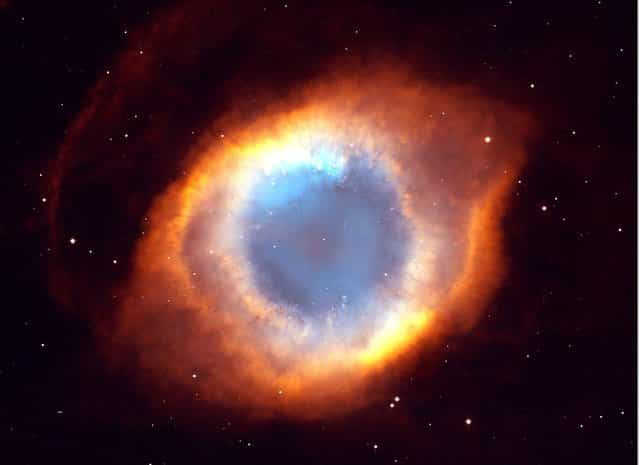
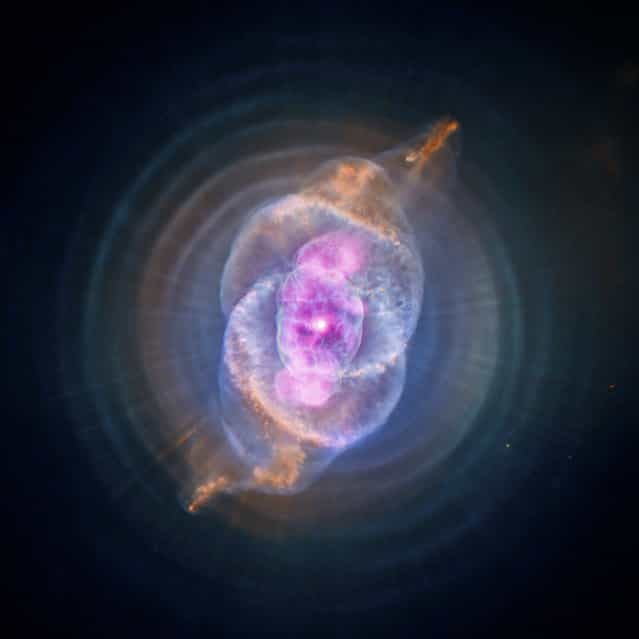
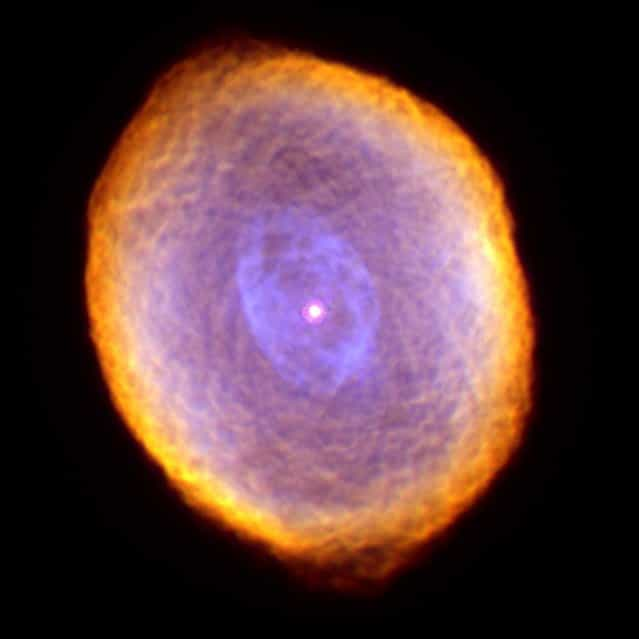
![This image, taken by the NASA/ESA Hubble Space Telescope February 6, 2007, shows the planetary nebula NGC 2440 – the chaotic structure of the demise of a star, a colorful [last Hurray] of a star like our Sun. (Photo by AP Photo/Hubble) This image, taken by the NASA/ESA Hubble Space Telescope February 6, 2007, shows the planetary nebula NGC 2440 – the chaotic structure of the demise of a star, a colorful [last Hurray] of a star like our Sun. (Photo by AP Photo/Hubble)](http://img.gagdaily.com/uploads/posts/app/2013/thumbs/0000cc3e_medium.jpg)
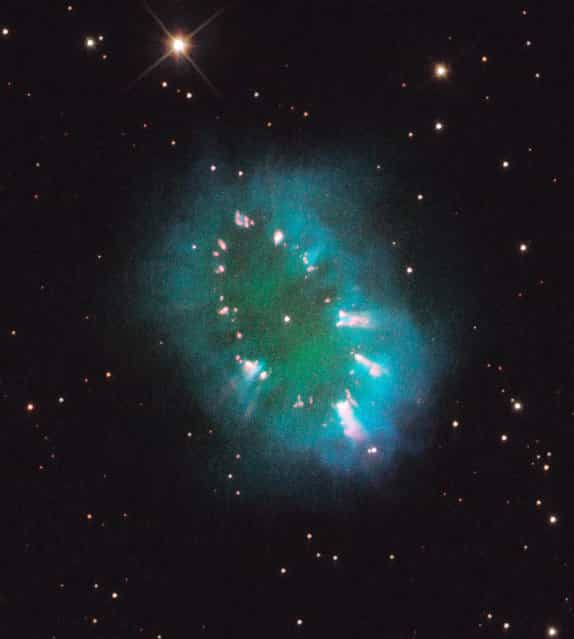
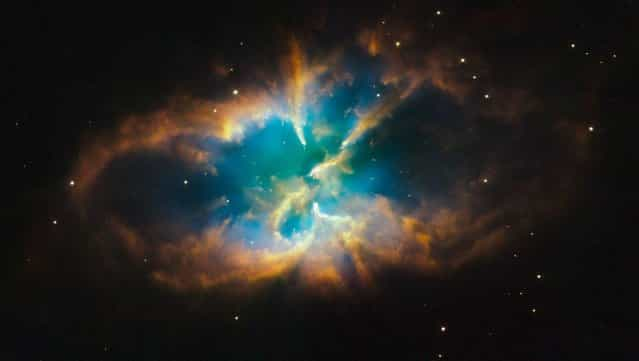
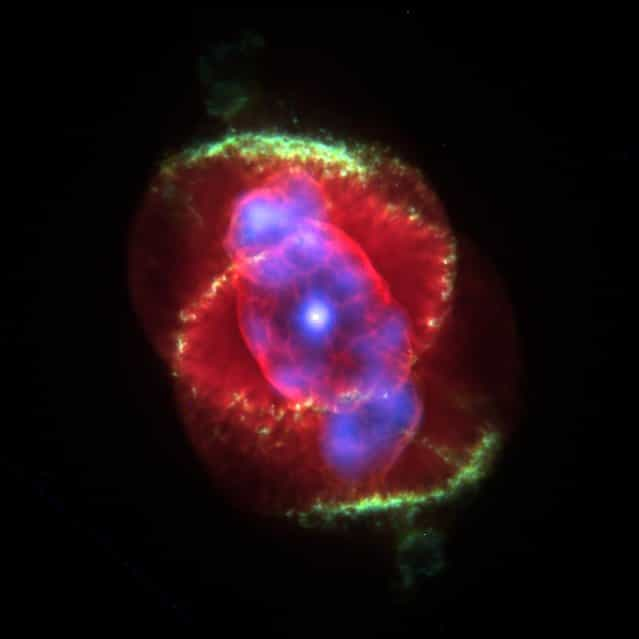
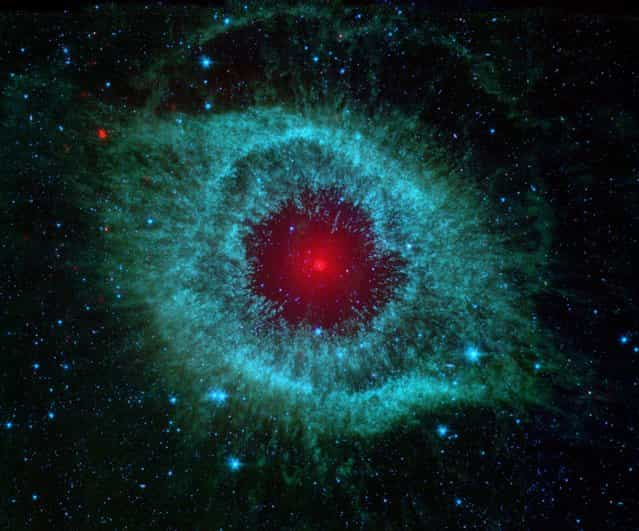
![This intriguing picture from ESO’s Very Large Telescope shows the glowing green planetary nebula IC 1295 surrounding a dim and dying star. It is located about 3,300 light-years away in the constellation of Scutum (The Shield). The new image, released on April 10, 2013 by the European Southern Observatory, shows the planetary nebula IC 1295 like it has never been seen before. This picture, which ESO scientists dubbed [ghostly], marks the first time the nebula has been imaged such unprecedented detail. (Photo by ESO) This intriguing picture from ESO’s Very Large Telescope shows the glowing green planetary nebula IC 1295 surrounding a dim and dying star. It is located about 3,300 light-years away in the constellation of Scutum (The Shield). The new image, released on April 10, 2013 by the European Southern Observatory, shows the planetary nebula IC 1295 like it has never been seen before. This picture, which ESO scientists dubbed [ghostly], marks the first time the nebula has been imaged such unprecedented detail. (Photo by ESO)](http://img.gagdaily.com/uploads/posts/app/2013/thumbs/0000cc43_medium.jpg)

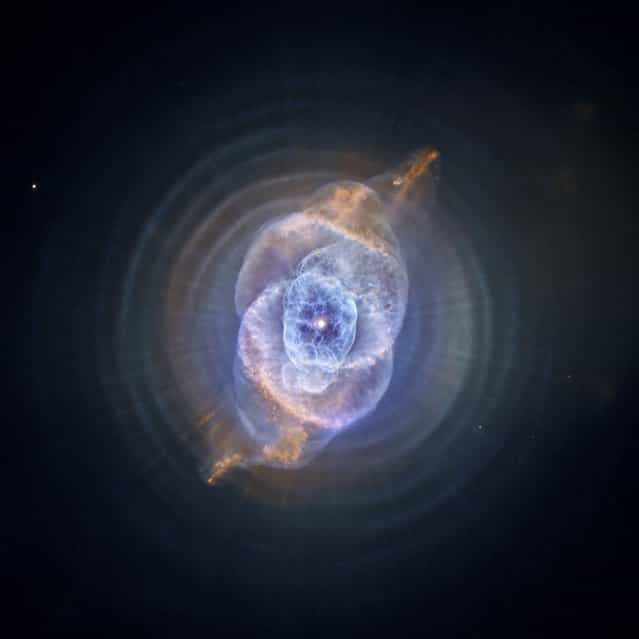
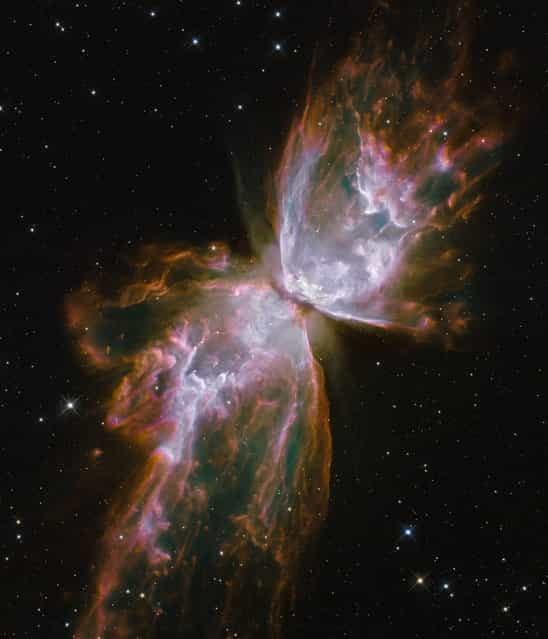

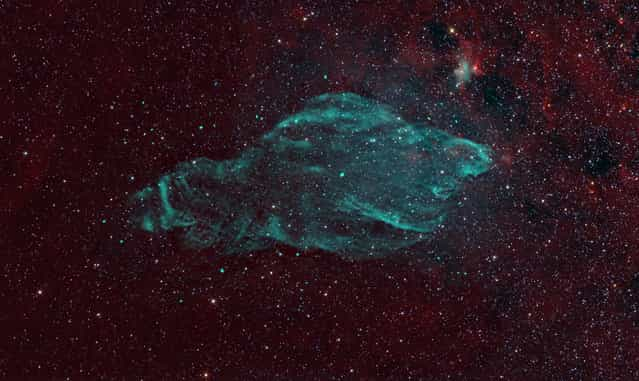
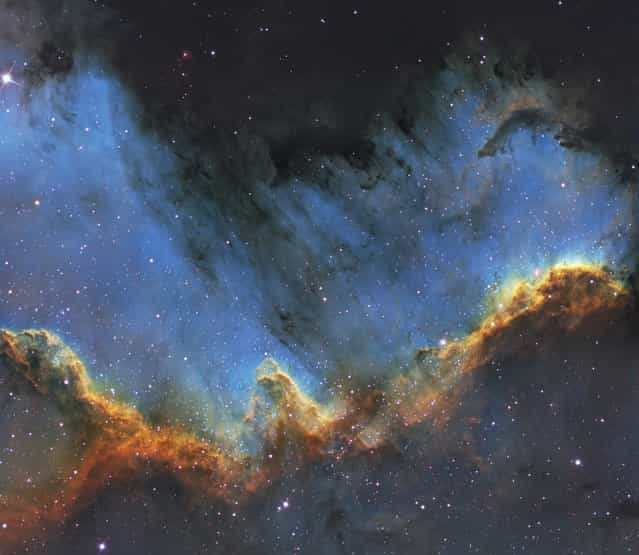
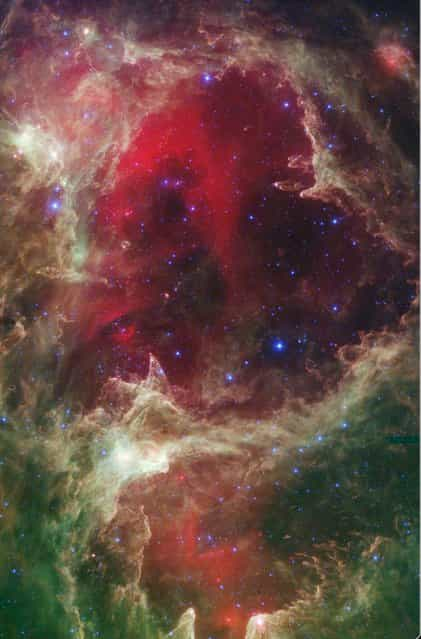
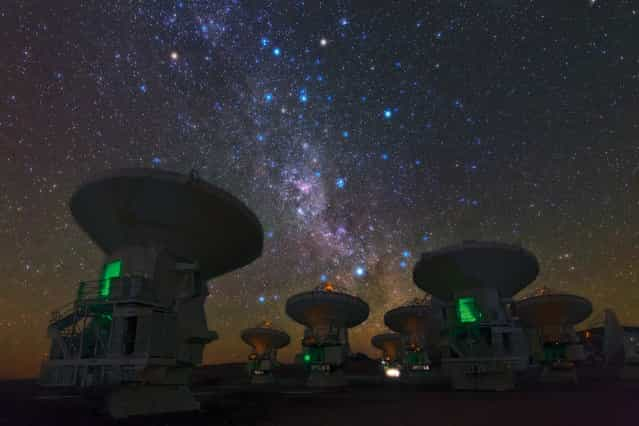
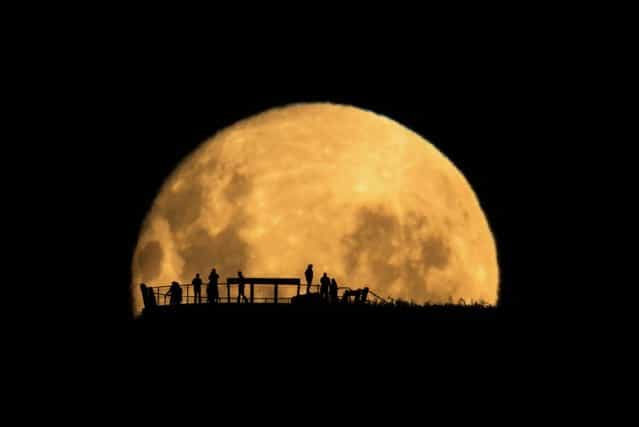
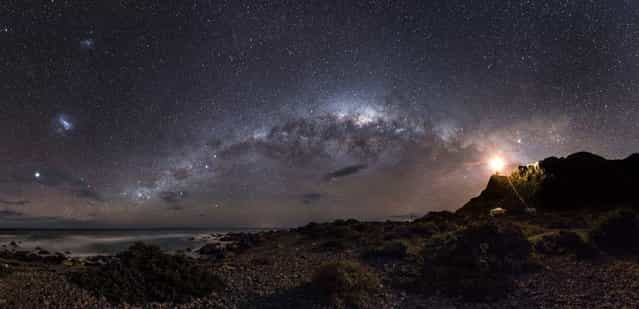
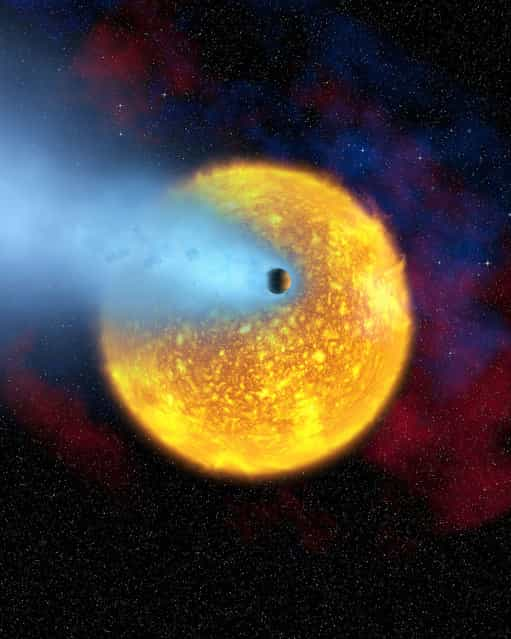
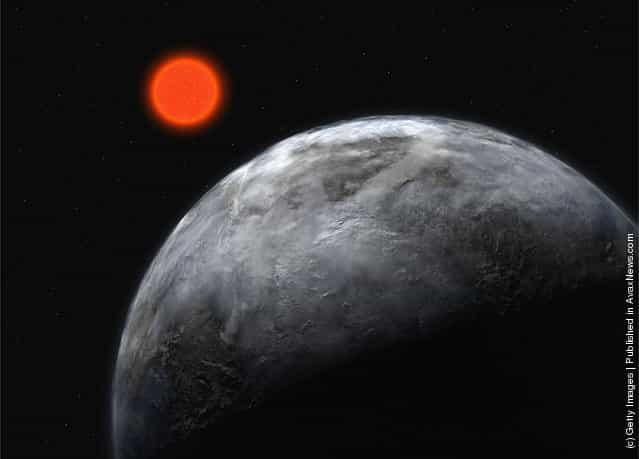
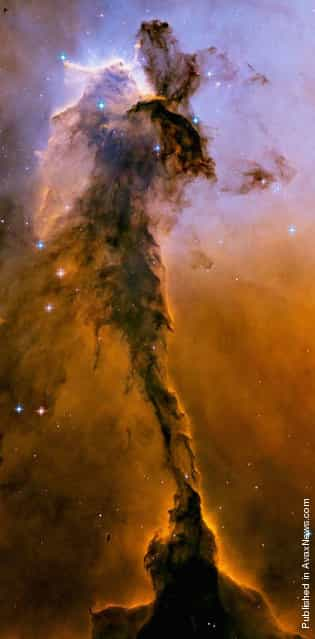

![Rare [Hybrid] Total Solar Eclipse Rare [Hybrid] Total Solar Eclipse](http://img.gagdaily.com/uploads/posts/fact/2013/short/00010c55_medium.jpg)






